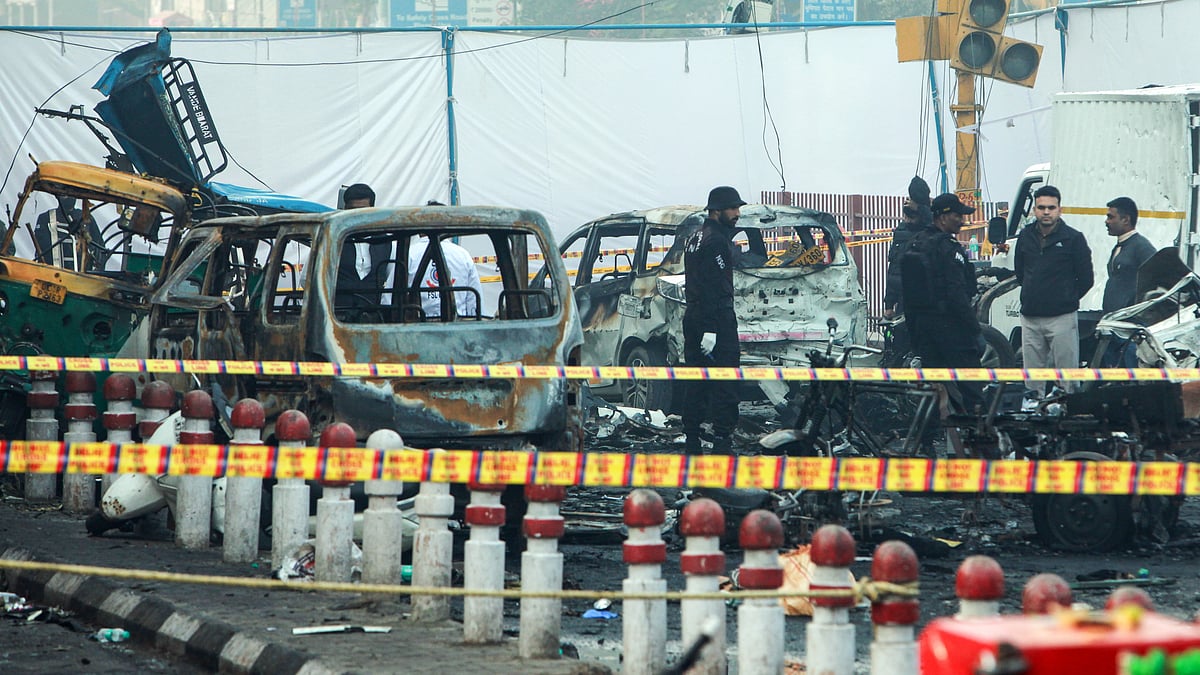India’s 10/11, A Wake-Up Call
The horrific images of mangled vehicles and terrified bystanders have rekindled painful memories of an era when serial blasts were grimly routine.

India’s 10/11, A Wake-Up Call | ANI
The powerful explosion near Delhi’s Red Fort on Monday evening has shattered more than a few vehicles—it has destroyed the fragile sense of security the capital’s citizens had enjoyed for over a decade. For nearly 14 years, Delhi had been free of major blasts. That calm was broken when a slow-moving car exploded at a traffic signal, killing 13 people and injuring several others in the crowded Old Delhi locality. The horrific images of mangled vehicles and terrified bystanders have rekindled painful memories of an era when serial blasts were grimly routine. On the second day after the tragedy, the cause of the blast remains uncertain. Whether it was triggered by a CNG cylinder or an explosive device is yet to be established. The absence of shrapnel, as confirmed by the police, seems to rule out an Improvised Explosive Device (IED) explosion. But the deaths and injuries are too grave to dismiss the incident as an accidental fire. Public anxiety is understandable, for every unanswered question deepens the fear that the city’s hard-won peace may be unravelling again.
It is reassuring that the National Investigation Agency (NIA) has taken charge of the probe. The multiplicity of investigating agencies often breeds confusion and conflicting theories. The NIA has the expertise and resources to undertake a scientific, evidence-based investigation, while the Delhi Police and other local bodies can assist in gathering clues swiftly. The explosion has also come in the shadow of disturbing reports from Haryana, where large quantities of explosives—nearly 2,900 kilograms—were recently seized from a warehouse in Faridabad, leading to the arrest of several suspects, including doctors. The driver of the car involved in Monday’s blast, reportedly a medical professional, was said to be absconding. If such reports are verified, they could point to the emergence of a “white-collar” module of terror operatives—a worrying new trend.
ALSO READ
There are also unverified suggestions that the blast could be linked to Pakistan-based Jaish-e-Mohammed, allegedly as revenge for Operation Sindoor, which destroyed its headquarters, or for the killing of its founder’s wife. Prime Minister Narendra Modi has assured the nation that those behind the blast will be brought to justice, even as Home Ministry officials emphasise that Operation Sindoor is far from over. Still, this is not the time for speculation. Premature accusations can jeopardise the integrity of the investigation and needlessly inflame public sentiment. As history shows, even in the case of the 9/11 attacks in the United States, investigators took time to gather incontrovertible forensic evidence before identifying the culprits. Delhi must now show the maturity of a city that has suffered and learnt. Whether the blast was an accident or a carefully orchestrated act of terror, the truth must emerge from patient and professional investigation—not conjecture.
RECENT STORIES
-
-
-
-
-